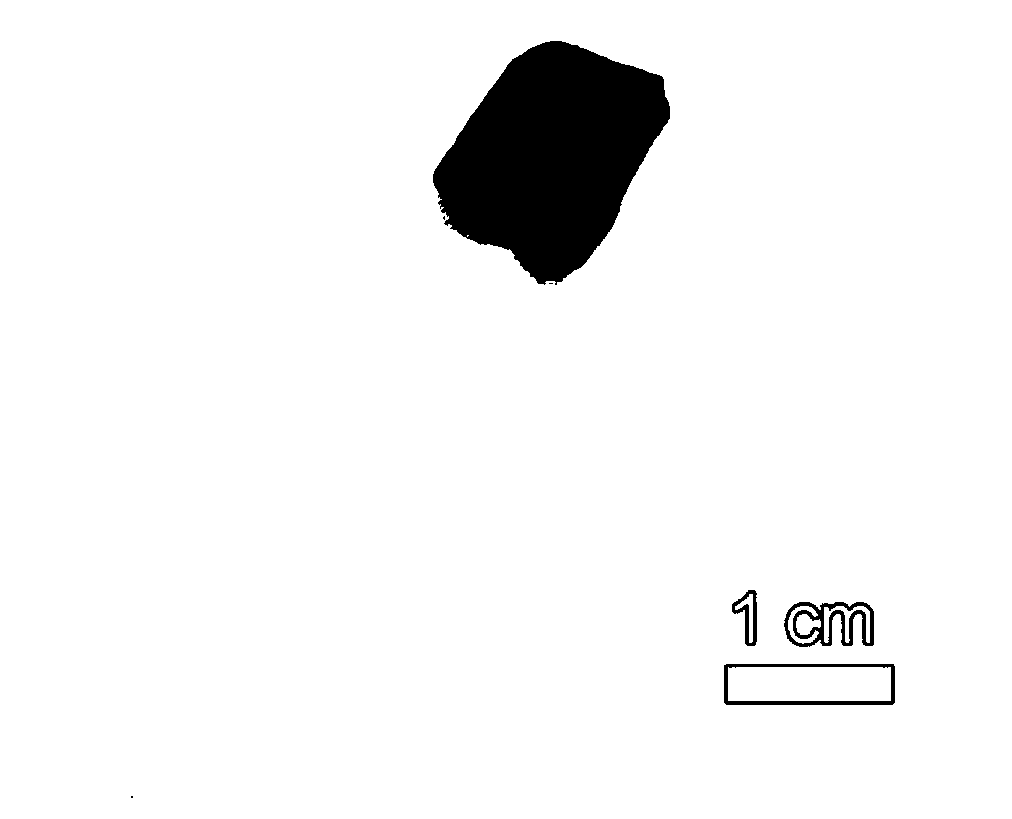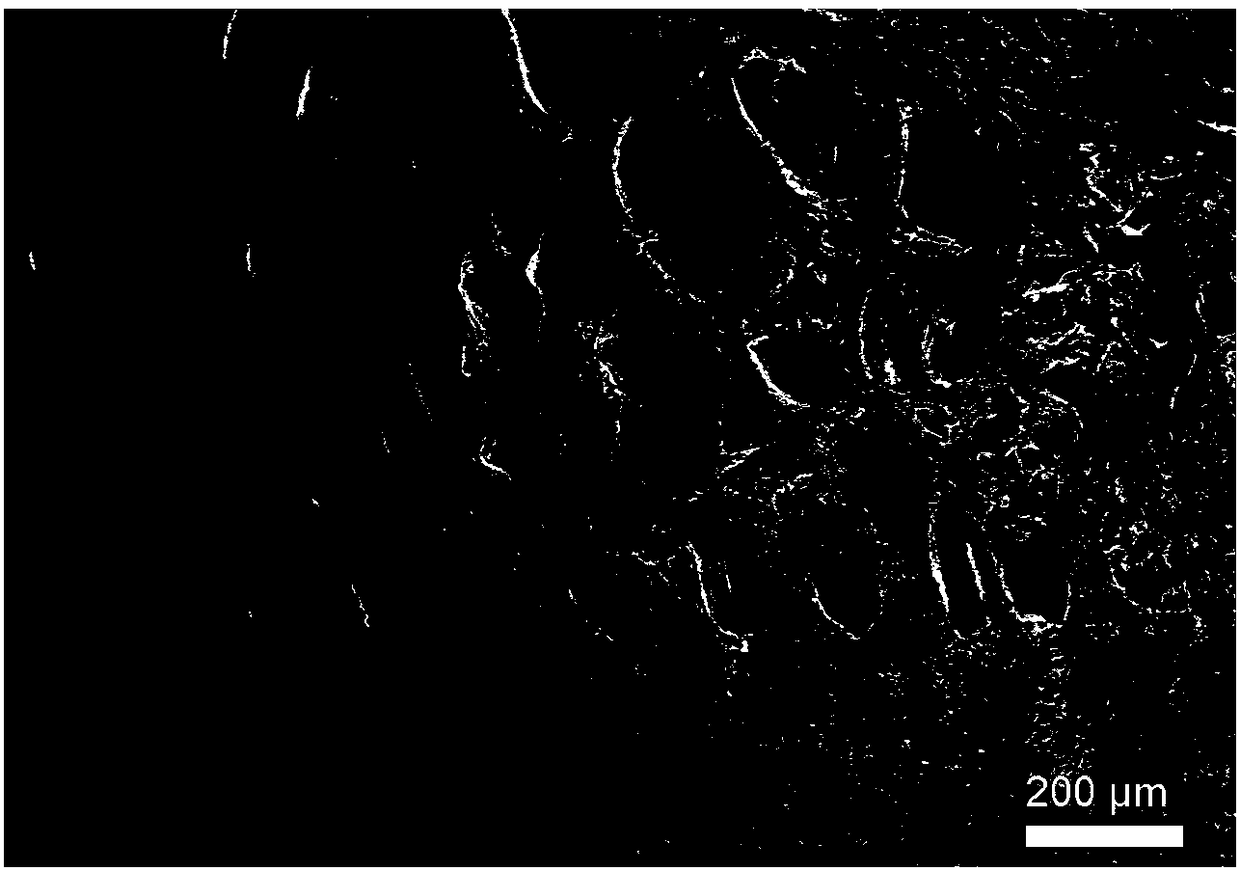A reinforcement method for saturated wooden cultural relics using nanocellulose
A nanocellulose and cellulose technology, applied in wood processing equipment, wood treatment, impregnation of wood, etc., can solve the problems of loss of mechanical strength and color, oxidation of water-saturated wood cultural relics, and disappearance of weathering, and achieve bright color and enhanced mechanical properties. Good strength and stability
- Summary
- Abstract
- Description
- Claims
- Application Information
AI Technical Summary
Problems solved by technology
Method used
Image
Examples
Embodiment 1
[0045] 1. The bamboo pulp after bleaching is prepared as 1wt% dispersion liquid and obtains 1wt% crude cellulose dispersion liquid by the method for high-pressure homogenization;
[0046] 2. Then add periodic acid, the mass ratio of cellulose to cellulose is 1:10, heat to 60°C, and stop the reaction after 2 hours of reaction;
[0047] 3. Repeatedly rinse the obtained dispersion with deionized water until it becomes neutral, then use an ultrasonic pulverizer (1500W) to sonicate the dispersion for 0.5h, and configure a cellulose nanofibril solution with a mass fraction of 0.05%;
[0048] 4. Polyethylene glycol is configured as a solution with a concentration of 10%, and mixed with the cellulose nanofibril solution with a mass fraction of 0.05% obtained in step 3 at 5:1 to obtain cellulose nanofibrils and polyethylene glycol Alcohol hardening agent;
[0049] 5. Polyethylene glycol (PEG) is configured as a solution with a molecular weight of 30000, and mixed with the solution obt...
Embodiment 2
[0053] 1. Bleached bamboo pulp is purchased in the market, crushed through an 80-mesh sieve, prepared into a 1wt% dispersion, and stored at 4°C;
[0054] 2. Take 400ml of the above dispersion liquid, stir evenly, add maleic acid, the molar ratio of cellulose to 20:1, disperse evenly, heat to 90°C, and the reaction time is 120min;
[0055] 3. Repeatedly rinse the obtained dispersion with deionized water until it becomes neutral, then use an ultrasonic pulverizer (1500W) to sonicate the dispersion for 1 hour, and prepare a cellulose nanofibril solution with a mass fraction of 0.1%;
[0056] 4. Polyethylene glycol is configured as a solution with a concentration of 25%, and mixed with the cellulose nanofibril solution with a mass fraction of 0.1% obtained in step 3 at a ratio of 1:1 to obtain cellulose nanofibrils and polyethylene glycol Alcohol hardening agent;
[0057] 5. Simply clean the water-saturated wooden cultural relics, cut them into 2×2×2cm water-saturated small woode...
Embodiment 3
[0060] 1. Bought absorbent cotton on the market, crushed it through an 80-mesh sieve, prepared it into a 1wt% dispersion, and stored it at 4°C;
[0061] 2. Take 400ml of the above dispersion, stir it evenly, add Tempo0.064g and NaBr0.4g, after the dispersion is uniform, add 2MNaClO, use 0.5MNaOH to control the pH of the dispersion at 10.2, react for 1h, then add 25ml of ethanol to terminate the reaction;
[0062] 3. Repeatedly rinse the obtained dispersion with deionized water to neutrality, then use an ultrasonic pulverizer (1500W) to sonicate the dispersion for 2 hours, and configure a cellulose nanofibril solution with a mass fraction of 0.02%;
[0063] 4. Polyethylene glycol is configured as a solution with a concentration of 30%, and mixed with the cellulose nanofibril solution with a mass fraction of 0.02% obtained in step 3 at 10:1 to obtain cellulose nanofibril and polyethylene glycol Alcohol hardening agent;
[0064] 5. Polyethylene glycol (PEG) is configured as a so...
PUM
 Login to View More
Login to View More Abstract
Description
Claims
Application Information
 Login to View More
Login to View More - R&D
- Intellectual Property
- Life Sciences
- Materials
- Tech Scout
- Unparalleled Data Quality
- Higher Quality Content
- 60% Fewer Hallucinations
Browse by: Latest US Patents, China's latest patents, Technical Efficacy Thesaurus, Application Domain, Technology Topic, Popular Technical Reports.
© 2025 PatSnap. All rights reserved.Legal|Privacy policy|Modern Slavery Act Transparency Statement|Sitemap|About US| Contact US: help@patsnap.com



